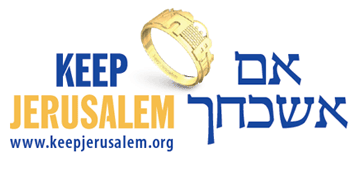Our Sages of the Talmud, who lived at the time of the destruction of the Second Temple, had a very clear take on what caused both destructions: Baseless hatred among the Jews, in its various manifestations, led to the sacking of Jerusalem, as did the cardinal sins of murder, incest, and idol worship specifically towards the end of the First Temple period.
The Sages also instituted fasts for the various milestones along the way, including for the siege placed upon Jerusalem, the breaching of the city walls, the actual burning of the Temple, and the assassination that dashed all hopes for Jewish sovereignty for several decades to come.
Each of these has its parallels in our contemporary situation. The massive wave of illegal Arab building , from Ramallah in the north to Bethlehem in the south, seeks to create the infrastructures for the capital of a Palestinian state. This creeping Arab expansion is definitely having a strangling effect – much like the Babylonian siege forcefully imposed upon Jerusalem long ago. This stifling siege of unhindered illegal Arab construction, combined with a lack of housing solutions and employment opportunities for Jews, has long been closing in on us.
In some places, the enemy has “breached” the walls – and right within our city limits, two huge Arab neighborhoods have sprouted and continue to grow wildly.
But possibly these problems are just the symptoms of deeper issues, as they were in the days of the Holy Temple. Are we sufficiently attached to each other? To Jerusalem? To our nationhood and sovereignty? To our age-old teachings and values??
What can we do to secure our capital, keep it unified, and develop it with a large Jewish majority?
KeepJerusalem’s Jerusalem Shield Program appears to be the only practical, democratic and safe answer for the urgent challenges we face. It involves a massive increase in Jewish housing and employment opportunities – and most important of all, the expansion of Jerusalem’s municipal borders so as to increase the city’s Jewish population. Satellite communities outside the current city borders will become part of a greater Jerusalem municipality, while Kafr Aqeb and the Shuafat refugee camp would be detracted from Jerusalem – not to become part of the Palestinian Authority, but rather as separate, new Israeli municipalities. This would change the 60-40 Jewish/Arab demographic ratio to 85-15.
Today, when we are on the fast track in rebuilding Jerusalem and sensing the footsteps of the Mashiach, it is incumbent upon us to continue to work together with brotherly, causeless love for greater progress towards a united, secure and Jewish Jerusalem. Tisha B’Av will thus truly turn from a day of mourning to one of joy and celebration.


